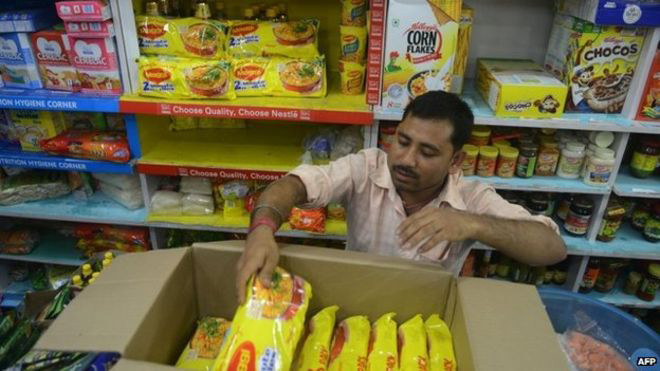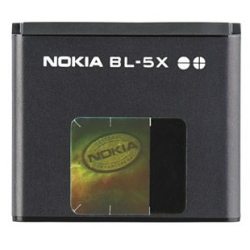Can Nestle turn around the Maggi crisis?
Opinion
 Over the last few weeks, I have been following the Maggi issue. It continues to be front page in almost all newspapers. Everyday there is fresh news. Plus all the “influentials” aka a Vir Sanghvi or a Chetan Bhagat as we say in PR have also written about it. Despite all of this, it is not done and dusted yet.
Over the last few weeks, I have been following the Maggi issue. It continues to be front page in almost all newspapers. Everyday there is fresh news. Plus all the “influentials” aka a Vir Sanghvi or a Chetan Bhagat as we say in PR have also written about it. Despite all of this, it is not done and dusted yet.
Maggi has emotional connect with customers
As a brand and communication person, I feel terribly sad when I see the brand getting into a ‘comatose’ state. One, it takes years of consistent efforts across the organisation to build a brand and make it brand stand for certain values.Two, in my mind Maggi has always been a “people’s brand”, trusted, reliable. Now that is a different ball game. A mammoth task. Much bigger than creating a edgy/ zingy/ sexy / youthy brand. Trust doesn’t come overnight. It has to be built brick by brick, every single day by the brand custodians. It is about emotional and rational connect. Everyone has a Maggi moment or a Maggi story to tell. Across age groups. Across price bands and income brackets. It takes years to get into people’s emotional and rational mind – emotional, when you think of “My Mom’s special Maggi” and rational, when you think of the multiple vendors who earn a living on Schzewaan Maggi or Chicken Tikka Maggi or just the availability and convenience to cook at 21,000 feet for our Army folks. And with trust as a brand parameter, you don’t get a second chance normally.
Three, is the overall approach and not just by Nestle but the entire food industry where products from different brands are getting picked up everyday by FSSAI. Maybe rightly so but there is no communication that is happening for the consumer who is getting confused every single day.
The Nokia battery crisis

As I see the drama unfolding I can’t help but recall and drive synergies from the Nokia battery crisis in 2007.
On Aug 14, 2007 Nokia announced a product advisory (different from a product recall; with an advisory there is no legal obligation to recall) for a certain batch of BL5C batteries (46 million approximately) manufactured by Matsushita between December 2005 and November 2006. There had been approximately 100 incidents of over heating reported globally. Consumers could check if the battery was impacted and get a replacement free of cost. Globally, this news came in and went by. In India, it became a product recall with multiple layers to it. Media got the news by afternoon but by late evening, one of the sensational TV channels (I guess for want of news) decided to make this “Breaking News”. The headline teaser suddenly became “Bomb in your pocket”. All other media followed suit and suddenly there was hostile media everywhere.
For the next four months, every day was fresh news for us and a fresh issue from fake batteries exploding in Raipur, Jalpaiguri, to consumers ransacking centres. The difference between Nokia and Maggi however, was the approach in tackling it and how it later led to Nokia becoming the #1 Most Trusted Brand by Economic Times. Incidentally, the Nokia battery crisis is also a case study at ISB, Hyderabad.
In the next few paragraphs, I will try and draw parallels and what could have been done better by Maggi and I would also say by the other food brands that are “almost” in the news.
Open and Transparent communication starting Day One:
As I mentioned, news went to the global and Indian media proactively but once it became “breaking news” of a bomb in your pocket, Nokia decided to go out and take the bull by the horns. In a matter of hours, there were live OB vans outside Nokia offices and live studio chats happening. Nokia spokespeople went right in - into TV studios where Nokia was being battered. One message – our consumers needed to how to find out of their battery is impacted or not and where to get it replaced.
Thanks to the media frenzy, consumers rushed to our care centres till the middle of the night and asking for replacements even on umimpacted batteries. There was almost an hourly update on TV channels on the battery crisis. This led to mayhem across the country. Police and lathi charge. It started with metros and then suddenly spiralled into very small cities where consumers would call media and show them a allegedly damaged battery/ phone. This started Round two of the crisis with fake battery blasts happening. Something which Nokia took a little while to figure out.
Undettered, Nokia addressed media across the country. After a few days, English media was reporting factual news, however “the Breaking news TV” and vernacular media was still on the boil with alleged fake battery blasts happening.
Nokia spokespeople went into metros, sub metros, even small towns with low media coverage like Azamgarh, Siliguri, Kolhapur and leveraged the platform to talk to the media about upcoming products so they had fresh news and also updated consumers on milestones for battery replacement. To close, Nokia told their consumers what was wrong, how Nokia will help. Simple open, transparent communication.
Maggi and hence Nestle were sitting on a storm that was brewing since late April. They ignored it assuming that it will die. All of May, they kept quiet and the first official response that came was when their global CEO arrived and held a press conference on the 5th of June. The media queries were being answered by either a “No comments” or a press release monologue. Their social media team was sending automated responses – “we will get back to you shortly”. What does that mean? How soon is shortly? And then Madhuri Dixit was more in news locally. Where was the local leadership? This brings me to my second point.
Empowered Local Leadership - In situations such as these, especially in MNCs, it is very important to have empowered local leadership and ‘a listening’ and empathetic global HQ. Brands need to act swiftly and decisively for consumers.
Since India was one of the largest impacted countries (Nokia’s second largest market then), the leadership ensured that they made it easy for consumers to walk in to any of the 800 Nokia care centres and check if their battery was impacted and even get it replaced if it was impacted. Globally, this was not the norm. It was all on email and Fedex. And then, because of the heavy rush of consumers to our care centres, we were falling short of replacement batteries. Nokia India leadership rerouted batteries from the Chennai factory to reach each and every of the 800 care centres in India. The entire global production and planning got shifted to cater to India. By the end of the crisis, almost 2 million batteries were replaced – impacted or not impacted. Therefore, it is very important in such situations to pick “consumer hot issues” and fix them quickly. It also becomes critical in such situations that there is no red tapism, no bureaucracy and no turf wars on who does what. Consumer in this case was all that mattered for Nokia.
Nestle, to date, has been mum. The local leadership of Nestle has not reached out to the consumer. Other than saying that they will take Maggi packets off the shelves, they have had a templatised, clnical response. So, even if as a consumer I want to trust Maggi, I have no one out there reiterating my trust! The government and food bodies are doing the talking even for Maggi/ Nestle. Almost every state has done a test and rejected the products – like a dominos effect. Yet, there continues to be radio silence from Maggi and as a consumer I will interpret this the way I want. And again, if Nestle is taking the packets off shelves, what happens to what I as a consumer consumed in the last few months? Did I consume extra dosage of lead and who will compensate for that? There is still no clarity on permissible levels of MSG or lead. Both my Mom and my 4 year old nephew love Maggi, and now my mom has stopped all noodles from coming home – Maggi or otherwise. Which brings me to my third point.
Industry joining hands – The third, most impactful approach for the Nokia battery crisis was that the entire telecom industry – mobile devices, operators, service providers came together. Nokia held industry briefings on the importance of original batteries (in normal circumstaces, batteries don’t explode unless these are fake), met government regulators so that they were sensitised. Contrary to that, the foods industry has still not come together. Every brand is doing their own number and no one is really taking thought leadership and educating consumers on whether their products are impacted or not. As a consumer I am confused. Should I buy the other noodle brands? Everyone is talking about MSG and its okay to have MSG in packaged food but how much? Lead is also present in all the instant products – it’s just that there is a level of permissible content – 2.5 parts per million. What does that mean for me as a consumer? Who defines permissible content? Why are US standards so much more stringent? How are food brands ensuring that I as a consumer get the right information? In my view, this is an excellent opportunity for a food brand to educate consumers and take the high ground now.
Education and awareness building - Lastly, Nokia started a mass media advertising campaign to educate consumers on how to understand if the battery is impacted, what to do next. Nokia followed this up with communication on how to identify original from fake batteries and culminated with Shahrukh Khan talking about how trust was so important. Nestle has instead replaced all Maggi ads with Milkmaid, Milk powder and other Nestle brands!
To close, its not a dead end. There is always a way forward. Hibernation is not the approach especially for a consumer facing brand – thinking it will all pass away. Your consumers might forgive you once but they won’t forgive you twice over for going under the sand. Trust? Nokia won the #1 Most Trusted brand right after the battery crisis in 2007 and got the faith and trust back from their consumers. Maggi might also have a chance too, to rectify and restore trust, but only if they reach out to their consumers now. Tomorrow might be just too late!
Poonam Kaul advises start-ups on their marketing communications strategy and till recently headed the PR function for India, Middle East and Africa for Nokia.
If you enjoyed this article, you can subscribe for free to our weekly event and subscriber alerts.
Featured

PR professionals share their views on journalists publicly calling them out on story pitches

Auto blogger renders unconditional apology to Value 360 for defamatory posts

Hottest Indian startups of 2020, Paytm, Dreams 11 lead the charge: Wizikey Report




